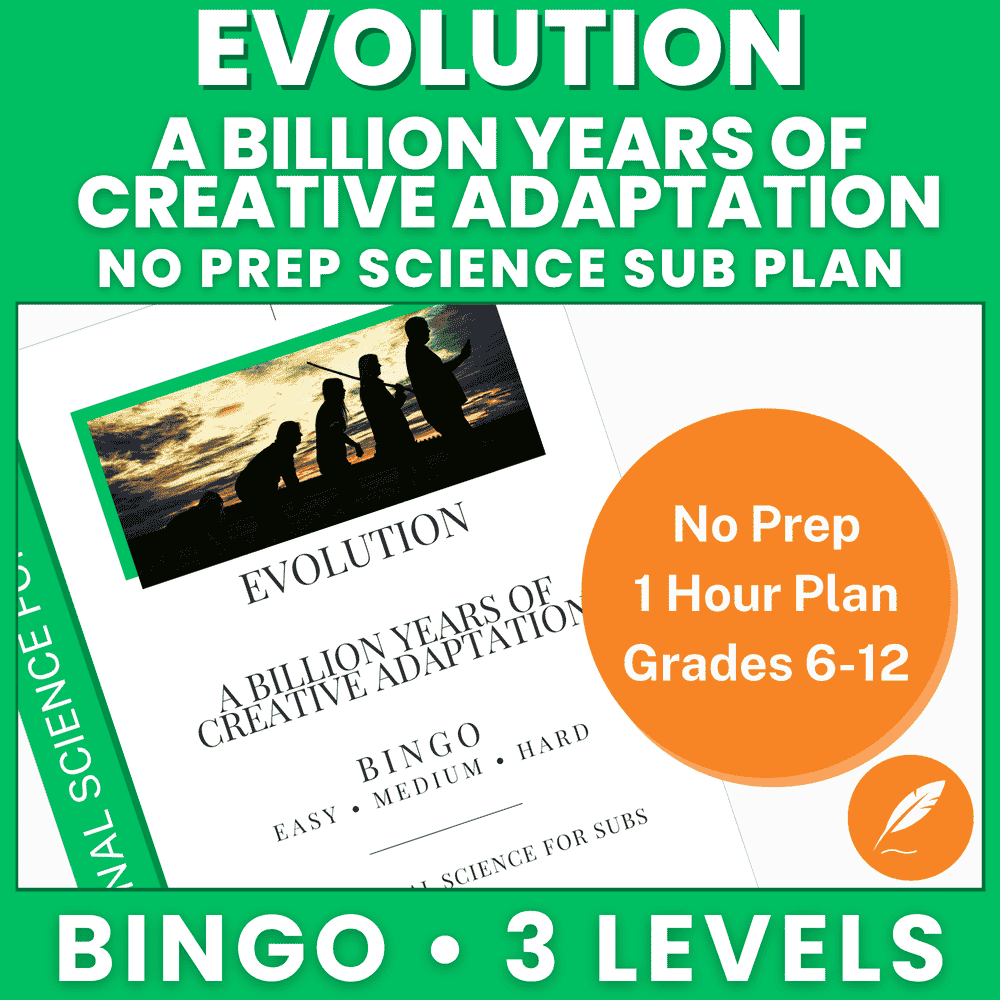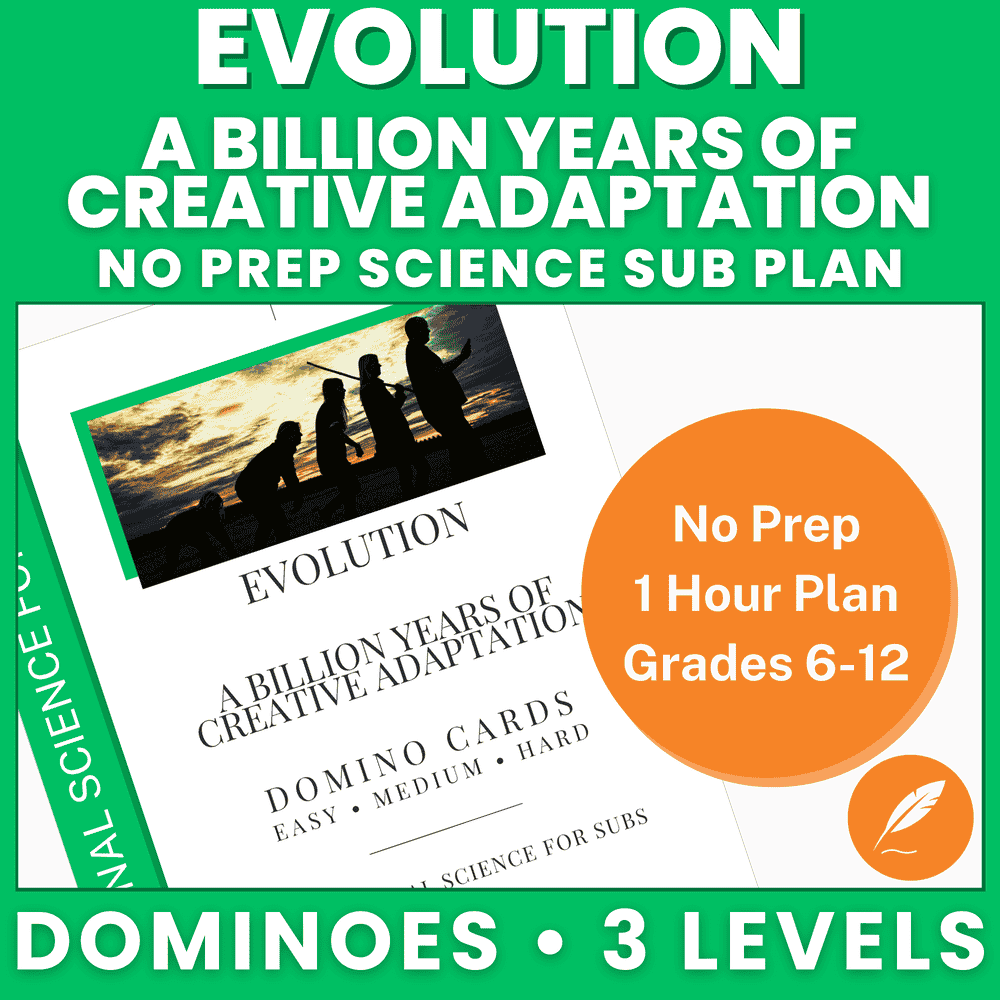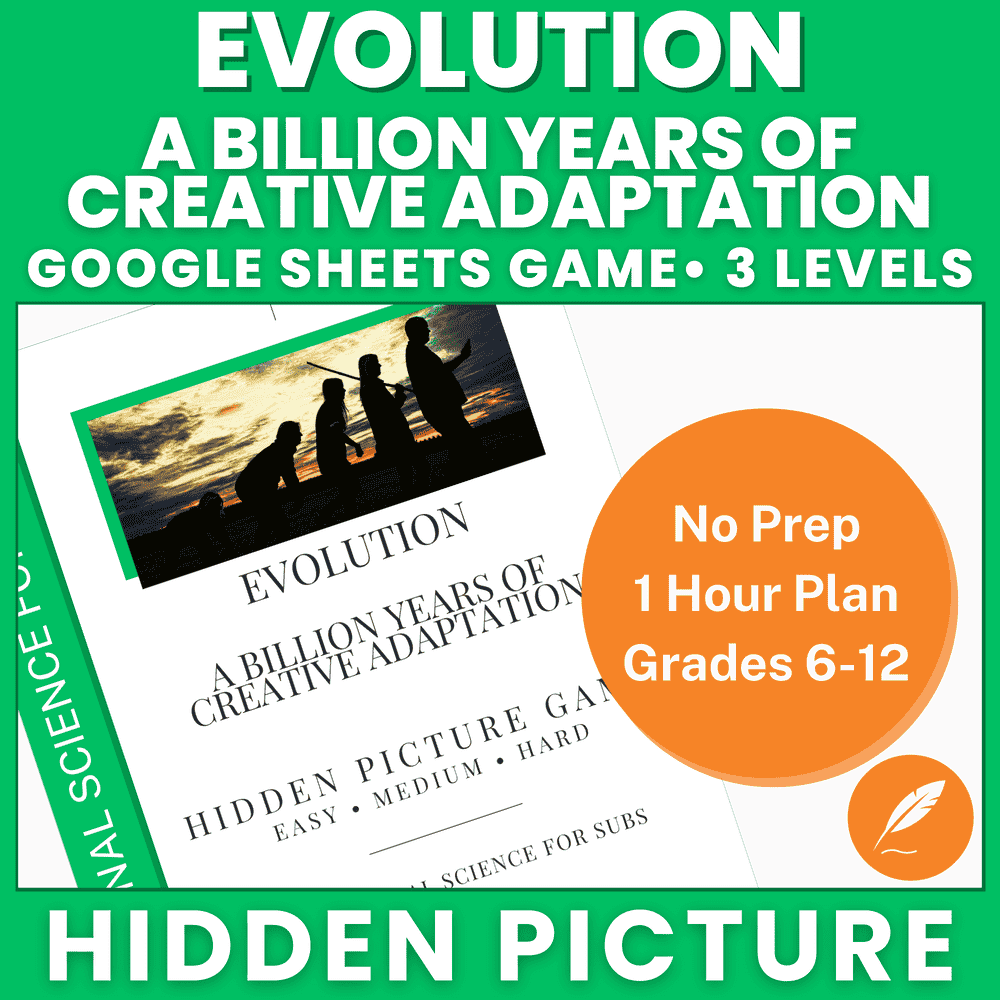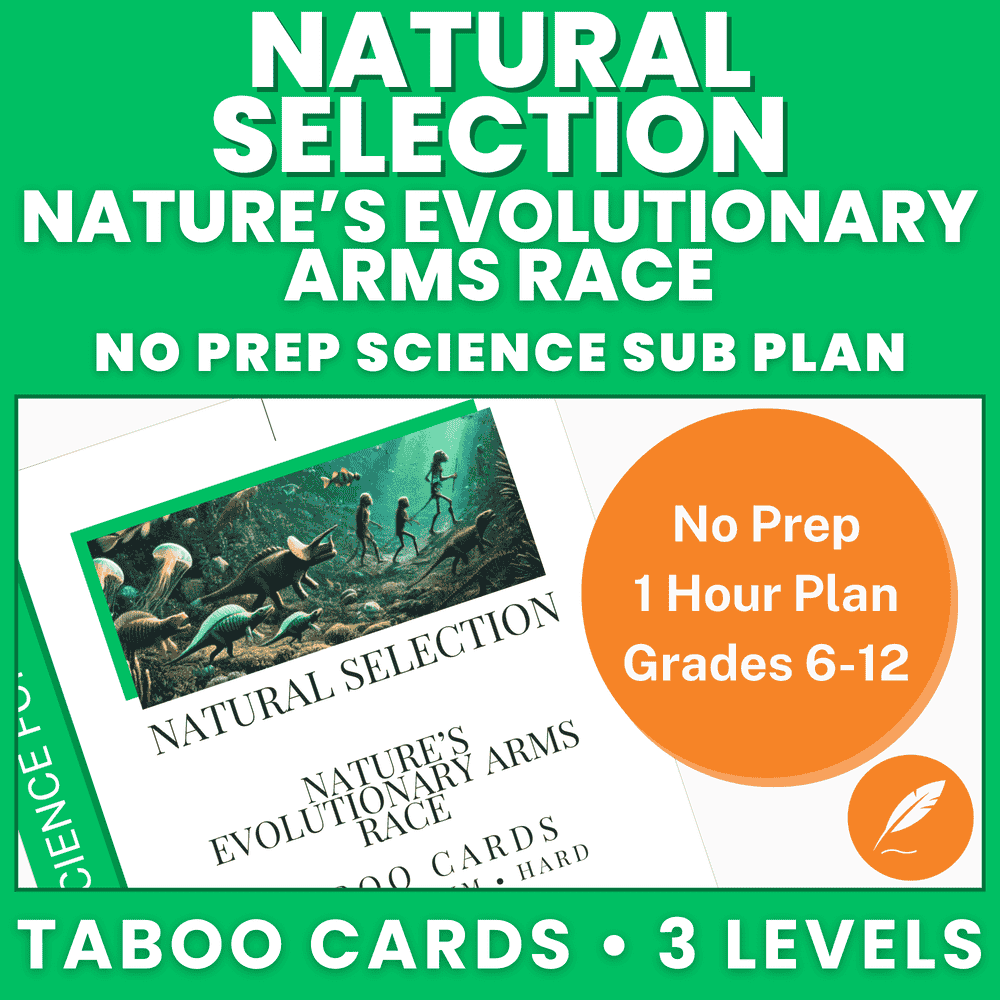Why Scavenger Hunts Are a Game-Changer in Science
Scavenger hunts aren’t just for kids at a birthday party—they’re a brilliant way to boost classroom engagement in science! These fun, interactive activities can transform dry lessons into exciting, hands-on learning experiences. Not only do scavenger hunts make complex science concepts more accessible, but they also get students moving, collaborating, and thinking critically. At Inspirational Science For Subs, we believe in shaking things up in the classroom, and using scavenger hunts in science is one of the best ways to spark curiosity. Ready to take your lessons to the next level? Keep reading to find out how!
More...
The Benefits of Scavenger Hunts for Science Learning
Hands-On Learning That Sticks
Scavenger hunts in science are more than just a fun activity—they’re a way to bring abstract concepts to life. By getting students to physically search for answers, they’re not just reading about science—they’re experiencing it. Whether they’re hunting for facts about the human body or looking for clues on the solar system, students become more engaged and retain information better. Plus, they get to move around, which can really help them focus!
Encouraging Teamwork and Collaboration
Another huge benefit is that scavenger hunts foster collaboration. When students work in teams, they practise key skills like problem-solving, communication, and critical thinking. Whether they’re sorting through materials or debating answers, they’ll be learning the importance of working together while reinforcing science concepts.
Boosting Motivation and Curiosity
Let’s face it: students sometimes need a bit of motivation to stay interested in science. Scavenger hunts create that spark of curiosity. They add an element of excitement, as students dive deeper into topics, seeking out clues and answers. This level of engagement encourages students to ask questions and explore science further—beyond the textbook!
Check out our Bingo Games on TPT - complete with 3 difficulty levels for each lesson plan! Whether you're looking for Physics, Chemistry or Biology Bingo Games, we've got you covered!
How to Set Up a Scavenger Hunt in Your Science Classroom
Step 1: Choose Your Science Topic
First things first, you need to decide on the science topic you want to explore. Whether it’s the human body, ecosystems, or the laws of physics, the topic should be something that piques students' interest and is relevant to what they're learning. You’ll want to pick something with plenty of key facts and details for students to hunt for.
Scavenger hunts are the perfect way to spark curiosity and enhance problem-solving in science! Find out how to get started! #ScienceLearning #scavengerhunt #HandsOnLearning @inspirationalscienceforsubs
Step 2: Plan the Clues and Tasks
Next, think about the clues or tasks you’ll give your students. These can be straightforward facts, questions, or even hands-on activities related to your topic. Make sure each clue leads to the next, so it’s not just a random scatter of information. It’s all about creating a path that keeps them moving and thinking.
Step 3: Set Up the Classroom
Now it’s time to transform your classroom into a scavenger hunt zone! Hide the clues in various spots, making sure they’re challenging but not impossible to find. You can use posters, science tools, or even digital clues on computers or tablets. If you have outdoor space, you can extend the hunt beyond the classroom!
Step 4: Divide into Teams
Split your students into small groups. This will get them collaborating and problem-solving together. Give each team a starting clue and let them go!
Ready to watch your students dive into a hands-on learning experience? Keep reading for some creative ideas to make the hunt even more exciting!
Check out our Domino Games on TPT - complete with 3 difficulty levels for each lesson plan! Whether you're looking for Physics, Chemistry or Biology Domino Games, we've got you covered!
Creative Ideas for Science Scavenger Hunts
Nature Scavenger Hunt
If you're teaching biology or environmental science, a nature scavenger hunt can be a fantastic way to get students interacting with the world around them. Have students look for different plants, insects, or natural phenomena. Each clue can include a description or a scientific question about each item they find. This not only makes learning hands-on but also sparks curiosity about the environment.
Lab Equipment Hunt
For chemistry or physics classes, set up a scavenger hunt using your lab equipment. You could have students identify and describe the purpose of various tools, such as beakers, Bunsen burners, or magnifying glasses. You might also include some tricky tasks, like matching chemical symbols to their elements. This activity helps them understand how different tools relate to scientific processes.
The Periodic Table Challenge
If you're diving into chemistry, use the periodic table as a guide for your scavenger hunt. Have students search for elements that match certain clues, such as ‘a metal that reacts with water’ or ‘an element essential for life’. This turns a sometimes complex topic into an interactive, exciting puzzle.
Science Fact Hunt
Another great idea is a science fact scavenger hunt. Post fascinating science facts around the room, but leave out some key details. Students will have to find the missing parts of the fact. This could involve anything from basic human biology to the laws of motion, all while making learning a bit more fun!
Want even more creative ideas for your scavenger hunt? Keep reading for some tips on engaging all your students!
Tips for Engaging All Students in Scavenger Hunts
1. Make it Inclusive
To keep everyone engaged, it’s essential to adapt your scavenger hunt to the varying levels of your students. For example, you could provide different levels of difficulty for each task. This ensures that every student feels challenged, but not overwhelmed. You might also pair students together in mixed-ability groups, so they can support each other.
2. Add Variety to Tasks
Not all students learn in the same way. Spice up your scavenger hunt by incorporating different types of activities – puzzles, riddles, matching games, or even mini-experiments. This variety will not only keep things exciting but also cater to different learning styles, from visual learners to hands-on explorers.
3. Use Technology
For a modern twist, why not integrate technology? You could set up QR codes around the room or use a scavenger hunt app that lets students track their progress and check in when they’ve found an item. The tech aspect will add an element of novelty and excitement to the activity.
4. Keep the Energy Up
Scavenger hunts can get a bit long if you’re not careful. To keep energy levels high, set short time limits for each round. This keeps students on their toes and makes the activity feel fast-paced and thrilling.
With these tips, you’ll make sure every student stays actively engaged and has a blast in your science scavenger hunt! Ready for some pro tips on maximising the educational benefits? Keep reading!
Check out our Google Sheets Hidden Picture Games on TPT - complete with 3 difficulty levels for each lesson plan! Whether you're looking for Physics, Chemistry or Biology Hidden Picture Games, we've got you covered!
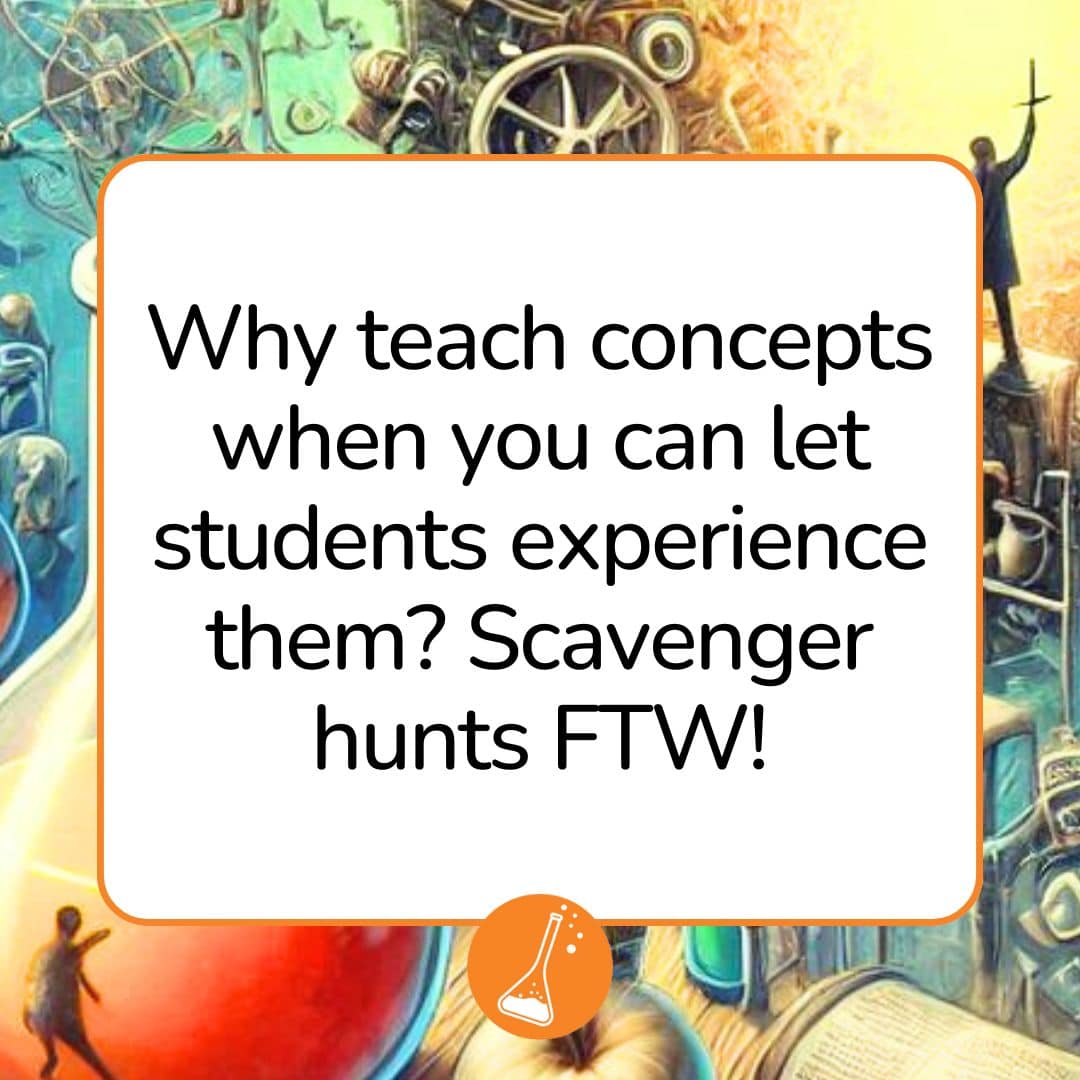
Maximising the Educational Value of Scavenger Hunts
1. Align with Learning Objectives
To get the most out of your scavenger hunt, make sure it's tied to the science concepts you're teaching. Whether it's biology, chemistry, or physics, each clue or task should help reinforce the lesson. For example, if you're studying ecosystems, have students identify plant species or note how different organisms interact with their environment.
2. Encourage Critical Thinking
Scavenger hunts aren’t just about finding items. To really engage your students, design tasks that require problem-solving and critical thinking. Challenge them to explain how certain phenomena work or predict outcomes based on scientific principles. This transforms the hunt into a deeper learning experience, rather than just a race to finish first.
3. Use Collaborative Learning
Scavenger hunts are great for promoting teamwork. Have students work in pairs or small groups to complete challenges. Collaboration encourages discussion, sharing of ideas, and helps reinforce the learning through peer teaching. You’ll notice students explaining concepts to each other, which strengthens their understanding.
4. Reflect and Discuss
After the scavenger hunt, bring the class together for a quick reflection. Ask students to share what they learned and how they arrived at their answers. This helps reinforce the material and ensures that the learning outcomes stick.
With these strategies, your science scavenger hunts will be more than just fun—they’ll be educational powerhouses that truly maximise learning.
Check out our Taboo Style Games on TPT - complete with 3 difficulty levels for each lesson plan! Whether you're looking for Physics, Chemistry or Biology Taboo Style Games, we've got you covered!

Enjoyed the article?
Summary: Boost Science Engagement with Scavenger Hunts
Scavenger hunts are a fantastic way to bring science to life in your classroom. They not only make learning more interactive but also encourage critical thinking, collaboration, and problem-solving. By aligning your hunts with learning objectives and incorporating tasks that challenge your students, you can maximise both fun and educational value. Whether you're teaching biology, chemistry, or physics, scavenger hunts are an effective tool for boosting student engagement and helping them connect with the material in a meaningful way. So, why not spice up your lessons and let your students explore science in a whole new way?

